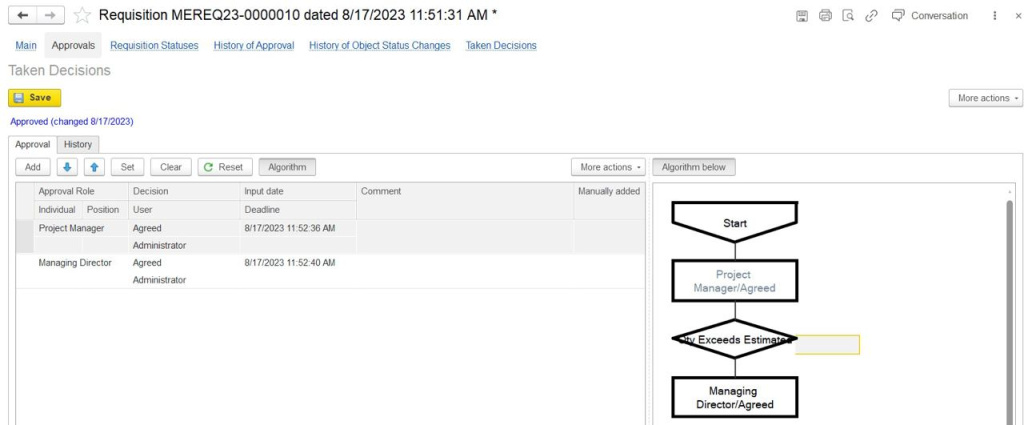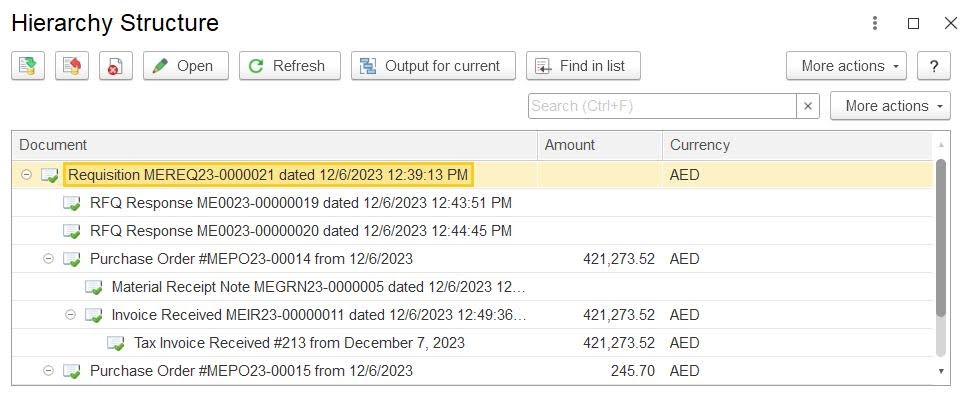Procurement is a significant factor in construction, often constituting 40 to 70% of a company's total expenditure. Industry executives view this function as a reliable business partner.
Here, we'll get into the critical elements that significantly enhance the effectiveness of procurement strategies. Read on for a comprehensive roadmap for developing procurement strategies to increase your business value.
What Is a Construction Procurement Strategy
A construction procurement strategy is a paper that outlines the process for sourcing materials and supplies for the project. It's specifically focusing on tendering and contracts.
The construction team develops the document collaboratively with the client to ensure consensus on the chosen strategy.
A strategy can change quickly. It may need additional adjustments, information, and other design programs.
The Importance of Procurement Strategy in Construction
Here are several points that prove procurement strategy importance:
-
Cost savings. A well-designed procurement strategy minimizes construction project costs, avoiding overruns by negotiating with suppliers and exploring budget-friendly alternatives.
-
Quality control. Procurement strategy impacts purchased materials and services that should meet required quality standards through checks, audits, and collaboration with suppliers.
-
Punctuality. It ensures the timely delivery of a project. This is necessary when collaborating with suppliers to establish and monitor delivery schedules. The strategy helps construction projects follow timelines and finish punctually.
-
Handling risks. A procurement strategy aids you in addressing construction project risks by anticipating supplier insolvency or material shortage issues. It also enables proactive planning to mitigate the impact of risks.
-
Contract management. With the procurement strategy, you can create and manage contracts with suppliers, ensuring clear terms and conditions for both parties. It prevents misunderstandings and disputes that could impede the project or increase costs.
-
Working with suppliers. You can assess supplier performance and cultivate strong relationships with reliable suppliers, ensuring that purchased items meet required quality standards and are delivered punctually.
Reduce costs and avoid shortages
Optimize procurement with FirstBit
Request a demo
Construction Procurement Routes
There are several types of procurement routes in construction. Each has its specifics and probable risks.
Traditional Procurement
The contractor's responsibility is limited to construction, while a consultant or engineer handles design and contract management.
Profit. Established parameters for assessing value for money, suitable for well-defined projects with low risks.
Challenges. Contractors can face design costs and risk allocation.
Challenges. Contractors can face design costs and risk allocation.
Management Contracting
Clients, consultants, contractors, and subcontractors participate. The contractor manages the project, and subcontractors handle the building aspect in their fields. The client manages finance and operations.
Profit. The method provides short terms of project execution.
Challenges. It is more likely that the client will bear some risks. Сontractors focus on the implementation of the project but not on cost saving.
Challenges. It is more likely that the client will bear some risks. Сontractors focus on the implementation of the project but not on cost saving.
Design and Build (D&B)
The same contractor is responsible for designing and constructing the project, with risks allocated to the contractor. The consultant manages the contract, and the client controls finance and operations.
Profit. Closer collaboration, streamlined process, and risk allocation to a single entity.
Challenges. The client needs more influence on designer decisions. Also, the contractor may emphasize cost savings more than quality.
Challenges. The client needs more influence on designer decisions. Also, the contractor may emphasize cost savings more than quality.
Integrated Project Delivery (IPD)
All project stakeholders (owner, architect, contractor, and suppliers) collaborate to maximize efficiency and minimize risks.
Profit. Transparency allows stakeholders to identify issues initially and minimize the risk of delays and cost overruns.
Challenges. Identifying responsibilities can be complicated. Success depends on a memorandum of understanding between involved parties.
Challenges. Identifying responsibilities can be complicated. Success depends on a memorandum of understanding between involved parties.
Types of Procurement Strategies in Construction
When choosing a procurement strategy, understanding what course to follow is essential. Following all types will be difficult, but a few are doable.
Among the types:
-
Cost reduction is a type of procurement strategy based on saving money and streamlining your purchasing process.
-
Green purchasing type focuses on purchasing goods and servicing them with low environmental effects. This strategy encompasses products crafted from recycled materials, those with low emissions, or items designed for energy efficiency.
-
Risk management focuses on risk reduction of purchasing goods or services. Essential for businesses seeking protection from potential issues in their purchases, this type involves identifying and assessing risks, developing contingency plans, and establishing risk-sharing arrangements with suppliers.
-
Global sourcing strategy entails procuring goods or services from global suppliers, allowing businesses to secure the most favorable purchase prices. The strategy diversifies global suppliers' bases for risk mitigation and explores new markets to discover innovative products.
-
Total quality management type helps with supply quality control. This strategic approach is crucial for businesses aiming to prevent purchase issues and secure optimal value.
-
Supplier management strategy emphasizes building supplier relationships, setting performance standards, conducting audits, and providing training to enhance purchase quality and maximize business value.
Build reliable partnerships with suppliers
Request a demo
Steps to Build an Effective Procurement Strategy in Construction
Here, we provide some core steps to build an effective procurement strategy in construction.
Analyze Current State
Evaluate your current conditions, including existing vendor relationships, purchasing process, costs. Revealing spend areas and categories will allow you to identify opportunities for cost savings.
Create a starting point to measure your progress and evaluate market conditions and potential risks that might impact your business.
Identify the Needs
Identifying needs involves setting your procurement requirements. It is achieved through assessing the desired goods or services, required quantity, and necessary quality, considering budget constraints and purchase timelines.
This step will also help clarify your vision of the construction project.
Analyze Supply Market
Once you identify the requirements, you can specify and evaluate potential suppliers by analyzing the supply market. This process includes web searches or structured measures like RFPs (Requests for proposals), RFQs (Request for quotation), and RFIs (Request for information). Evaluation metrics include:
-
Pricing
-
Service quality
-
Reputation
-
Warranty provisions
-
Customer service
Selecting a supplier points to the beginning of the contracting process. This step involves a detailed assessment of factors such as pricing structures, scopes of construction work, terms and conditions, and delivery timelines.
Define Your Strategy
Here, we remind you of a few universal guidelines for you to follow:
-
Set your objectives. Make them specific, measurable, achievable, relevant, and time-bound. For example, your goal might be to complete the project 3 months ahead of schedule or to reduce material costs by 17% in the 6 months.
-
Outline your strategy. Now, tailor your strategy to meet these goals. Choose from various strategies, such as risk management, global sourcing, total quality management, or supplier management and optimization.
-
Use specific tools. Find a suitable technology to streamline your procurement process, reduce costs, and improve supplier relationships.
Note Key Elements of Effective Procurement Strategy in Construction
Including these points in the document will help you clarify your strategy and simplify task planning:
-
Strategy approval. It is a brief strategy outlining your overall procurement approach.
-
Tactical plan. The detailed plan of how you intend to implement your strategy. It consists of stages and micro-goals based on the approved strategy.
-
Desired result. The result that you expect from your procurement strategy. Building a plan with micro-goals is noticeably easier when you know what you're expecting.
-
Deadlines. Time limit setting can help achieve goals and monitor the progress for the desired result. Deadlines can be short-term, medium-term, or long-term.
-
Measures. A list of metrics for tracking your progress and assessing your results. It consists of cost savings, quality improvements, or supplier performance options.
-
Specialized tools and allocated resources. A list of the tools and resources to help you implement your strategy. The list can include online marketplaces, software, and training programs.
Implement Your Procurement Strategy
Implementing your procurement strategy in construction entails translating your plan into action. Here, you begin by assigning specific roles and responsibilities to your team members. Subsequently, establish streamlined processes and procedures for the procurement activities.
For instance, when seeking bids from suppliers, you can formulate a standardized request for proposal (RFP) template. Additionally, crafting purchase order templates and contracts, fostering relationships with new suppliers, and actively working towards enhancing overall supplier performance are integral aspects of implementing your procurement strategy in construction.
Analyze, Sum Up and Improve
Regular analysis and review processes are valuable tools to pinpoint areas needing adjustments or enhancements. After that, you can leverage it to formulate long-term plans for the business.
For example, tracking progress against set objectives allows for strategic revisions if necessary. Additionally, conducting routine supplier performance reviews is essential to promptly identify and address any issues or concerns that may arise.
Leveraging Technologies for Procurement
Remember that a construction procurement strategy is a living document. You should be ready to adjust plans based on changing internal and external circumstances.
Utilizing digital procurement tools offers better visibility, reduces risk, and streamlines workflows. Depending on your needs, you can use several tools: E-Procurement Platforms, Building Information Modeling (BIM), Supply Chain Management Software, Data Analytics, Internet of Things (IoT), and Smart Technologies.
There are more efficient solutions than using each set of digital tools separately. There is an ERP software that combines them all into one. It contributes to reduced costs and risks and enhanced collaboration with suppliers.
Align every purchase with project goals
Track supplier performance and control costs
Request a demo
Procurement Strategy with FirstBit
A versatile tool for mending and improving is a dream that rarely finds fulfillment. We have provided our customers with the most convenient tool for the construction business, allowing them to have a clear look at all procurement strategy implementation stages. First Bit offers EPR Software tailored specifically for you and your construction companies of all sizes. The software includes important procurement plan implementation stages, including designing, developing, training, and maintenance.
Also, First Bit ERP takes into account the specifics of construction law in the UAE and ensures an individual approach to optimizing your procurement in the construction industry. We service the software for streamlining your procurement planning and removing communication gaps between sites and offices.
-
Procurement requisition. Look through the requisition with budget control and the agreement phase in one touch. Here, you face handy tabs with approval and its history and other windows to make sure your requisition is clear for you and a vendor as well. The solution provides items, contents, and limits for purchasing and transferring to make your procurement more effective.
-
Quotation comparison form. Accessible display of requests for quotations from vendors. The software will help you monitor suppliers’ prices in procurement, visually emphasizing the most advantageous offer. It also provides delivery terms and payment terms information.
-
Hierarchy Structure. The program also provides a chain of procurement documents, which will allow you to control the contracting process better. It also displays the sum amount for each doc.
-
Procurement analysis. First Bit ERP program gives a view of what was ordered, what is in transition, and what was received on one screen.
Entering a new field can be challenging on its own. The necessity to simultaneously alter your systems adds an extra layer of difficulty.
However, with our adaptable and customized solution, utilizing the FirstBit ERP system is suitable for contracting. The software ensures uninterrupted business operations, allowing you to focus on your construction business transformation without disruptions.

Anna Fischer
Construction Content Writer

See FirstBit ERP solutions in action
Discover how our system solves the unique challenges of contractors in a personalized demo.
After the demo you will get a quotation for your company.
After the demo you will get a quotation for your company.














